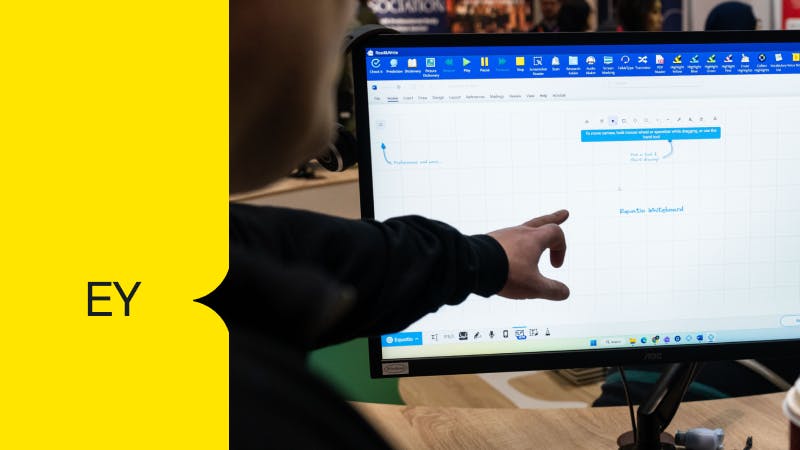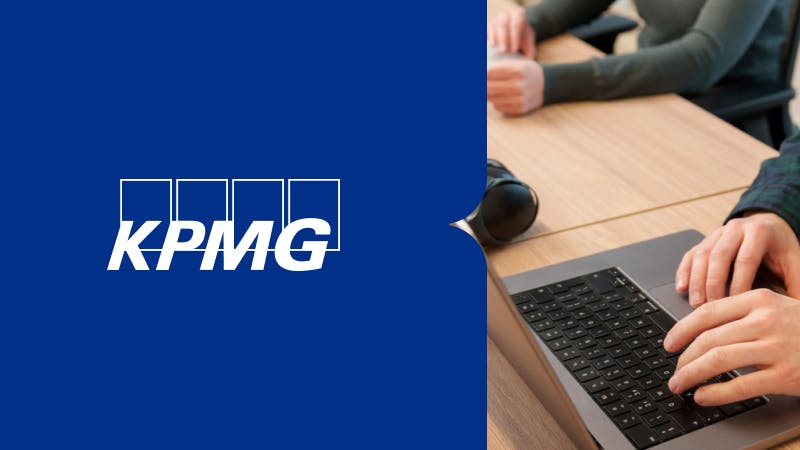Results at a glance
- A surge in demand for Read&Write by employees, resulting in company-wide rollout
- Employees feel heard and listened to with more licenses for everyone
- Supporting EY's goal to level the playing field for every employee to reach their full potential
EY provide services to help build trust and confidence in the capital markets, providing services around four key areas: Assurance, Consulting, Strategy and Transactions, and Tax.
Neuroinclusion at EY
EY employs around 400,000 people globally across 150 countries. Recognizing and celebrating the unique strengths of their people is at the heart of EY’s culture. They empower their people to be themselves, so that they can ‘pursue careers as unique as they are, and build their own exceptional EY experiences’.
To achieve their neuroinclusion goals, EY:
- Think broadly about differences: EY recognizes that diversity comes in all forms and strives to create fair and supportive work environments for all. This includes differences in working and thinking styles, as well as nationality, language, education, gender, sexual orientation, age, and abilities and disabilities, to name a few.
- Recognize the importance of equity: Equity is recognizing that everyone has different needs, and giving people what they need to reach an equal outcome. EY is ‘committed to providing the tools, resources and environment that all EY professionals need to be successful and build meaningful careers.’
- Celebrate and recognize differences so staff feel empowered to be themselves: We all want to feel like we belong, it’s human nature. Achieving a sense of belonging is to feel valued and accepted for who you are. In the workplace, that means feeling comfortable and confident to bring our full selves to work. At EY, they believe that ‘Inclusiveness is about leveraging our differences, where everyone experiences a sense of belonging and feels safe to surface many aspects of who they are and bring forward their perspectives and ideas.’
- Encourage proactiveness and change with a roadmap for success: EY strives to create a place where employees feel free to be themselves at work. They realize that to achieve this they must look critically at the organizational culture and individual experiences of all EY people. They’ve identified key areas to consider across each. Within their roadmap, they’re transparent about where they want to be and how far they have to go.
- Value the role of neuroinclusive technology: As part of their roadmap, EY consider how they can create an environment where all people can thrive, and where relationships and innovation flourish. They’re looking at how they can encourage all employees to contribute and influence company culture. They also carry out activities to identify any barriers that might be impacting on employees being able to fully engage. Neuroinclusive technology plays a valuable role. It’s helping them to create an inclusive working environment where employees can understand and communicate in their own way.
The impact of neuroinclusive technology
Up to 1 in 5 people around the world are neurodivergent. 10% are dyslexic, 6% are dyspraxic, 5% have ADHD, and 1-2% are autistic.
These individuals often think, learn, process and behave in ways that are more unique to the typical population. With this comes the benefits of out-of-the-box thinking, creative solutions and more. It also means we should support them to work and achieve in their own way.
Speaking on this, Kevin Grogg, Assistive Technologies Service Owner at EY says: “Our neurodiverse population brings an untapped talent. So part of our job within Assistive Technologies is to maximize the talents that our workforce are bringing to us, and provide an environment where it can be maximized.”
Kevin continues: “We make suggestions, and work together with individuals to find solutions that work for them. It’s important that the individual is always in control.”
At EY our purpose is building a better working world. And we do that at an individual level, team level, client level, and also society in general. We need diversity in thought to come up with diverse solutions that really set us apart from our competitors. Assistive technology helps us to leverage this. It’s not only the right thing to do, but studies have shown that teams are more cohesive with inclusivity. So it’s a win-win situation for both for the employer and employee, and for society in general.”
Why EY chose Read&Write for Work for their workforce
On why they chose Read&Write, Kevin says: “We listened to our employees, and Read&Write came up several times. I did my research, learned about the software and struck up a conversation. Like with any large company, there's a lot of things we have to do to make sure the software's going to function well in our global environment. So we did our due diligence. We worked with Everway, and everybody was terrific with all the questions that I came to them with. We decided to add the software to our global app store in 2018.”
Since then EY employees have been benefitting from the neuroinclusive features Read&Write offers. Kevin continues: “We’ve seen explosive growth since we added Read&Write to our EY app store. We have an increased demand for it, so we’re currently in the process of adding more licenses so that it's available for everybody.”
With an increasing number of licenses, Read&Write will continue to support EY’s goal for workplace inclusion. Speaking on this, Kevin says: “Our goal is to level the playing field for absolutely everybody. It’s ambitious but it’s what we strive for. Inclusive technology supports this goal.”
Tips from EY for adopting neuroinclusive technology in the workplace
With a large workforce, how do EY maximize neuroinclusive technology to make sure it works for all? Below, Kevin shares three tips for a successful integration:
- Make the software easy to access for everyone
“So one thing we do is ask - how do we make our inclusive technology available across 150+ countries to 400,000 people? We’re never going to be able to talk to everybody within EY. So that’s where we have the advantage of our EY app store, which is available globally. From there, employees can download Read&Write directly to their computer.
“A big advantage is that we understand it can be really difficult for people to raise their hand or self-identify and ask for help. So by having the EY app store, employees don’t have to talk to anyone. They can simply download the software themselves and try it out.”
- Use your community to spread the word
"Spreading the word about Read&Write is all about finding individuals in different areas of the business to help. For example, leaders across different regions, as well as Employee Resource Groups (ERGs). We have a US group called AccessAbilities, and a UK Neurodiversity Community. I attend their monthly meetings and talk about the global availability of certain software titles (like Read&Write). Sometimes I’ll also demo a specific feature.
“ERGs are key in the process because individuals within the ERGs will share their own experiences with tools that work well for them. Read&Write is consistently brought up in our neurodiversity community as something that may be helpful. Many people in the group will guide others to the EY app store to download the software. And that’s the ultimate compliment for us. People can get help without having to formally ask us - we’re helping our people to help themselves.
“As well as using internal connections, we also present at external Assistive Technology conferences. We’re all in the same business for the same reason. We want to help people. So if I feel somebody could benefit from Read&Write I’ll share it with them, because it’s working well for a lot of people within EY.”
- Make it easy for end users to connect with you
“It’s important that our people know that we’re always here to help. So we want to make it as easy as possible for individuals to connect with us. We have multiple ways that people can connect with assistive technology, including a self-service portal and a shared email mailbox. We also have a service desk to answer any questions, as well as support articles. We use Microsoft Teams as our online meeting platform and work with its product specialists regarding features that may benefit the Assistive Technology community. It’s important to show anyone who needs assistive technology that they know that they’re not alone.”




